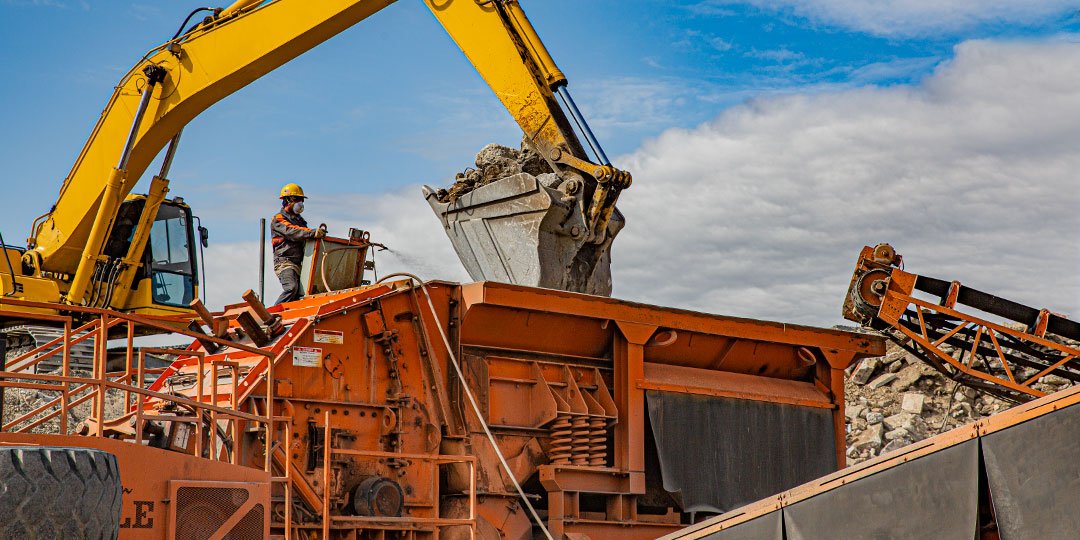There are many ways to crush a rock—and depending on your industry, your location, and the project specifications, the equipment that you use and the layout by which it crushes that rock is often rather unique, especially when it comes to product size.
The degree to which material is reduced through stages of primary, secondary, and tertiary crushing can depend on the type of material, like aggregate, concrete, and asphalt, and can also depend on the variety of output sizes needing produced.

Primary crushing is the first stage of material reduction and can sometimes be the only stage needed to generate the desired product for a job. Depending on the setup, primary crushing will take the larger material that has been blasted, excavated, or reclaimed and process it through an impactor, jaw, or gyratory crusher to generate a range of product sizes.
For many aggregate producers, utilizing a closed-circuit portable crusher plant with scalping and screening capabilities can be all they need to create the product they need. But when a wider variety of product is desired and certain material is being processed, like concrete and asphalt, it can be valuable to rely on additional stages of crushing, like secondary and tertiary.
Secondary crushing, as you can imagine, is the second stage of material processing following its initial reduction. At this stage, material will flow through perhaps a second impactor or even a cone crusher, which is effective at breaking down these types of material.
There are also tertiary and even quaternary stages of crushing that exist to achieve the finer levels of material reduction. These stages in addition to secondary crushing can often be laid out utilizing an open-circuit portable crusher plant system where processed material is screened and conveyed from one crusher to the next.
Relying on these many stages of crushing beyond only primary can add great value to a crushing operation. Not only can multiple sizes of product be generated, but often in an open-circuit crushing layout, the flow and processing of material is streamlined and can increase output when compared to a closed-circuit crushing layout.
Eagle Crusher offers a comprehensive portfolio of closed-circuit and open-circuit portable crusher plants alike, manufacturing powerful equipment like horizontal-shaft impactors, jaw crushers, and cone crushers that are critical for any stage of crushing. When you speak with a Team Eagle representative, we can help you determine which crushing equipment will be best for your next project.
Serious Projects Demand Eagle Crusher.
Eagle Crusher consistently leads the industry in new product innovations. We stand by our products with unsurpassed service and support to make your job easier.
Get serious. Get Eagle Crusher.
• Durability and longevity
• 24-hour parts and service
• American made
• Highest productivity and profits
• High resale value
• Celebrating 100+ years of service



